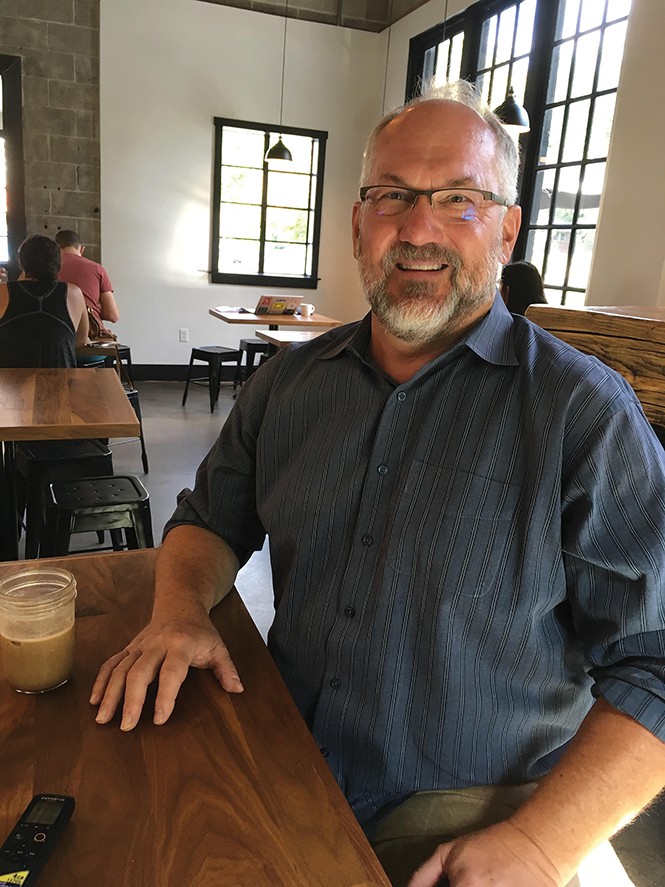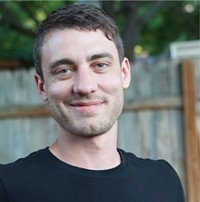The Diversity Issue
Community leaders, scholars recognize lack of it in city council.
By Dylan Woolf Harris @dylantheharrisTrickling through the doors of an Avenues café, the a.m. customers are noticeably younger than ranking City Councilman Stan Penfold, who's at a table sipping iced coffee out of a mason jar.
Penfold, 60, has called Salt Lake City home for more than three decades and been at his place in the lower Avenues for about 12 years. When he moved from Northern California for work, he didn't expect to grow older with this city. Yet Salt Lake City—as it sometimes tends to do—charmed him into staying a little longer. Before long his roots were fixed. So, he's seen this town's transformation. And the neighborhood, as Penfold has observed, isn't growing old with him so much as churning over into a younger version of itself.
"It feels like the demographics of the city, and certainly my district, is changing," he says. "Over the eight years that I've been on city council, the neighborhood is growing younger. ... Eight years ago, maybe there were two families with kids, and now
Penfold believes the burgeoning restaurant, bar and art scenes downtown, coupled with alluring mountains, have drawn more young job-seekers than in years past.
"Younger people, in general, want to be in urban settings," he says. "The housing crisis and cost has influenced that a little bit. It's really challenging for young couples to buy a house, so they're more apartment dwellers."
Zhou Yu, a demography professor at the University of Utah, however, says on the surface, data suggests that Salt Lake City is getting slightly older with a median age of 31.5 in 2015 compared with about 30 in 2000. But, as Yu explains, that's likely because people continue to live longer, driving up the average. His own study and perception comport with
"Young people are coming in and older folks are moving away," Yu says. "You see this population turnover even though the total number has not increased in a dramatic way, the composition or the makeup of the population has changed."
Yu theorizes that in the past 10 years, Salt Lake City's vibrancy has attracted young professionals—at the same time, rising housing prices make renting a more practical option—and the city offers an array of rental units beyond those found in towns and suburbs.
Much like Penfold's street, the board he's served on for nearly a decade could be getting younger, too. In the coming months, its two eldest members, Penfold and Lisa Ramsey Adams, 59, have elected not to run for their seats again.
The average age of the next council, of course, hinges on the ages of the victors come
Citywide, the average age of the 19 candidates running for a council seat this year is around 43. To break it down by decade: Two of the candidates were born in the 1990s, five were born in the '80s, six in the '70s, four in the '60s, one in the '50s and one in the '40s.
Does a candidate's age matter to voters? So happens, it does a little, University of Utah political science professor Matthew Burbank says. According to him, age is one of a few "descriptive characteristics" to which voters pay attention.
Burbank says the proclivity of voters is to side with candidates with whom they share those descriptive characteristics, things like race, gender and age group—but, importantly, those attributes are typically not the deciding factor.
"Generally, what studies have suggested is that kind of representation matters to people in a basic, emotional fashion, but it does not tend to override partisanship, ideology and policy positions," he says.
The Salt Lake City council is nonpartisan but also a body that drives policy. It stands to reasons, then, that issue-voters are paying acute attention to candidates' ideas on obstacles like homelessness reform.
Penfold and Adams both recognize the similarities among council members, but age isn't the most pressing. Rather, they'd like to see more ethnic diversity—because right now, the monochromatic city council is enough to make you blanch. And although the Beehive State is notorious for its whiteness, the capital city has a sizable non-white population.
Yu says about 65.6 percent of the city identifies as "non-Hispanic white." And the latest census in 2010 indicated more than 22 percent of Salt Lakers are Latino. Yet no one on the city council is Hispanic or Latino. Historically, that's also been the case, though Lee Martinez was appointed to serve out the term of a vacated seat in 1997.
Burbank notes that governing bodies often find more support from their constituents when the decisions they make are informed by unique viewpoints. For that alone, it makes sense why Penfold and Adams desire a diverse council.
"In Salt Lake City, one of the enduring issues is what does the west side get versus what does the east side get," Burbank says. "That reflects socioeconomic status but also ethnicity and the composition of the people on the west side broadly and the composition of the people on the east side broadly.
Utah Coalition of La Raza is a local Latino advocacy organization. President Richard Jaramillo says it's nearly impossible to boil down the reasons why there's a paucity of Latino representation on city council but a lack of qualified candidates is not one of them.
In 2015, Nate Salazar lost in District 4 by only 171 votes to winner Derek Kitchen in an election with more than 4,800 ballots. Salazar went on to work in Salt Lake City Mayor Jackie Biskupski's office as a community liaison. Several communities have successfully elected Latinos or Latinas to represent them in the State Legislature, he notes.
Districts 1 and 2 are on the west side, where there is a higher concentration of the city's Latino population. Although Jaramillo says electing a Latino to city council is important, he doesn't disparage the council members from those neighborhoods.
"Yes, it is a concern, and yes we would like to see a person of color on the council since the city is nearly a quarter Latino," he says. "That said, I think that we can look at a lot of the different council members and see in some areas good work they've done on behalf of the communities they serve."
More by Dylan Woolf Harris
-
Dabakis Is Leaving the Building
Ever boisterous and outspoken, state senator says lending liberal voice trumps his bill tally.
- Apr 4, 2018
-
Gagged and Bound
Row between South Salt Lake and muralist gets the burlesque treatment.
- Mar 21, 2018
-
Inland Port Authority Update
Gov. Herbert signs contested bill into law.
- Mar 16, 2018
- More »
Latest in News
Readers also liked…
-
Raise a glass for E.L.T Harrison, architect of the Beerhive building on Main
Small Lake City
- Oct 11, 2023





